Gene machine
Concept
The user follows simple instructions on the cards provided (haven't
thought about where these might be kept yet, maybe in letterboxes?) and
draws the picture from the card. The user can also experimant by mixing
and matching cards or by making their own drawing and code instructions.
Physical interface
The exhibit will look like a drinking trough with an old style pump
tap and an old car tyre sitting on top, next to a row of letterxoxes containing
code cards.
Mechanics:
In order to draw anything the paper and tyre must be able to move sideways,
the tyre must be able to rotate and the pencil go up and down (on and off
the paper). The tyre and paper must both able to move to get a diagonal
line on the paper and a circle not centred in the middle of the paper.
In this pic the red line represents the lines that can be drawn by
the movement of the paper. The green lines are the paper movement, the
blue lines are the tyre along the trough and the rotation of the tyre will
allow us to draw circles at any of these points but I have not shown that
here.
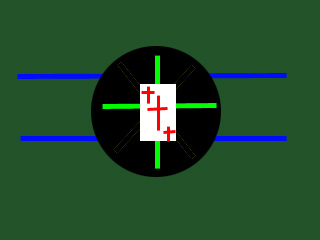
This pic shows the same thing if the tyre is rotated 45deg:
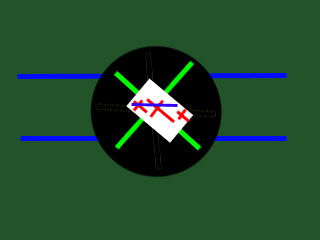
You can see the only wat to get an accurate diagonal line (blue) is
by moving the tyre along the trough because the axis of the paper movement
on top of the tyre moves with the tyre when it rotates, but the axis of
the trough does not.
Design look
Paper movement mechanism.
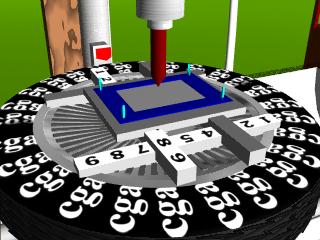
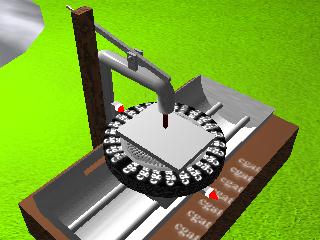
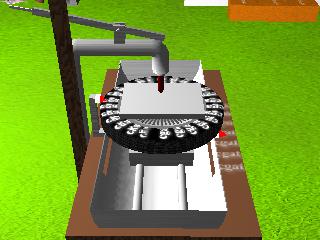
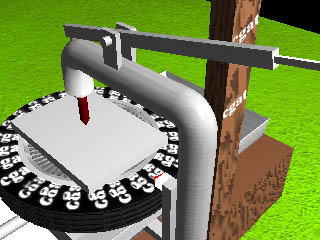
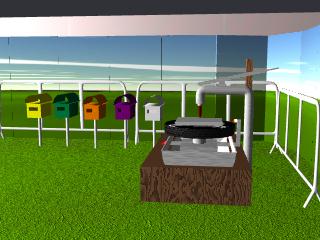
Interaction
The user will choose a set of cards from a particular letter box, the
cards will be the same colour as the letterbox and will be in a numbered
sequence. The cards in each letter box contain the instructions to construct
the image of the name on the letterbox eg CAT, DOG, ANT, SHEEP etc
 (Obviously
a better cat than this!!!)
(Obviously
a better cat than this!!!)
The instruction cards will consist of different combinations of the
letters cgat, the user sets the machine to the correct position by finding
the code on the trough that corresponds to the code on the card and turning
or moving the tyre so that the appropriate pointer is pointing at the code
sequence. All these movements of the tyre produce lines on the paper that
eventually make up the picture on the card. eg

If searching for the combinations of cgat is too confusing or difficult
the instructions could be simplified to involve numbers, letters and directions
eg rotate the tyre to number 7, move the tap to closed, move the tyre to
the letter c etc.
There will be a number of features on that are the same on each image
so that it would be possible to swap certian cards between groups and add
features successfully, eg adding cats whiskers to an ant. If any other
combinations are tried eg put a cats tail on an ant, we know this is impossible
and the result would be a failure.
As part of the visitor activity sheet students may be encouraged to
make their own drawings from their own codes.
Information provided by exhibit
This exhibit reinforces the fact that dna is a code and as such can
be used to describe anything. If the user imagines trying to describe an
entire person using code they begin to grasp how huge and complex that
task would be. It also shows how although it is difficult, it is possible
to mix and match instructions to get different results.
Graphic panels
Tri view (click to download)

index





 (Obviously
a better cat than this!!!)
(Obviously
a better cat than this!!!)
